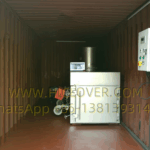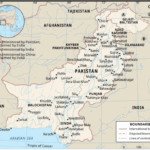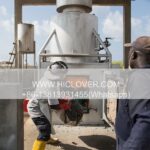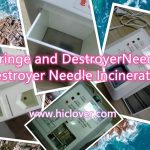Incinérateur de déchets médicaux au Bénin : une solution conforme aux normes CE, à haute capacité et adaptée aux besoins locaux
HICLOVER, spécialiste international reconnu dans la fabrication et l’exportation d’incinérateurs de déchets médicaux, présente son modèle spécifiquement configuré pour répondre à un récent appel d’offres au Bénin. Cette solution associe performance environnementale, robustesse et technologie moderne, tout en respectant les exigences strictes des normes CE ou FDA.
Caractéristiques techniques détaillées
Chambre de combustion principale
-
Parois intérieures entièrement isolées avec des matériaux réfractaires de haute qualité, garantissant une excellente rétention thermique et une grande durabilité.
-
Dimensions internes adaptées aux besoins locaux : 1060 x 800 x 700 mm (+/- 5%) pour optimiser la capacité et l’ergonomie de chargement.
-
Capacité de chargement minimale : 200 kg, permettant le traitement efficace des déchets hospitaliers et biologiques.
-
Puissance calorifique : jusqu’à 420 kW (au lieu de 390 kW), offrant une montée en température plus rapide et une meilleure efficacité de destruction.
-
Principe de chauffage à double passage, pour améliorer le rendement thermique et réduire la consommation de carburant.
Chambre de post-combustion (afterburner)
-
Entièrement isolée, fabriquée avec des briques réfractaires spéciales et une isolation à faible masse thermique.
-
Température minimale garantie : 1100°C, assurant une destruction totale des fumées et des polluants.
-
Contrôle automatique par ventilateurs de combustion pilotés et allumage on-off selon la température.
Commande et sécurité
-
Automate programmable (PLC) pour gérer tous les cycles, la sécurité et la maintenance préventive.
-
Écran tactile de 6 pouces pour un pilotage intuitif.
-
Enregistrement automatique des données et export via clé USB, permettant la traçabilité et la conformité réglementaire.
-
Bouton d’arrêt d’urgence et indicateurs de cycle, de fonctionnement et d’anomalie pour garantir la sécurité des opérateurs.
Alimentation et consommation
-
Alimentation électrique : 220–250 V, 50/60 Hz.
-
Carburant : Diesel avec réservoir intégré de 500 litres.
-
Vitesse de combustion : 50–75 kg/h, adaptée aux besoins quotidiens d’un hôpital, d’un centre de santé ou d’un laboratoire.
-
Panneaux isolants de 50 mm superwool pour réduire la déperdition thermique et augmenter la sécurité externe.
-
Conception avec cheminée de section adaptée pour assurer un tirage optimal et limiter les émissions.
Une solution pensée pour l’Afrique de l’Ouest
Cet incinérateur s’inscrit pleinement dans les politiques publiques visant à :
-
améliorer la gestion des déchets hospitaliers,
-
limiter les risques sanitaires,
-
et respecter les normes internationales en matière d’émissions polluantes.
HICLOVER, fort de son expérience auprès des hôpitaux, ONG et organismes internationaux (ONU, OMS, etc.), propose des solutions clé en main : formation des opérateurs, mise en service et assistance technique.
Contact et informations
Pour en savoir plus ou demander un devis personnalisé pour votre établissement au Bénin ou ailleurs en Afrique :
Site web : www.hiclover.com
E-mail : sales@hiclover.com
Mots-clés SEO inclus
incinérateur de déchets médicaux Bénin, incinérateur conforme CE, gestion déchets hospitaliers Afrique, destruction déchets biomédicaux, incinérateur programmable PLC, afterburner haute température.



















